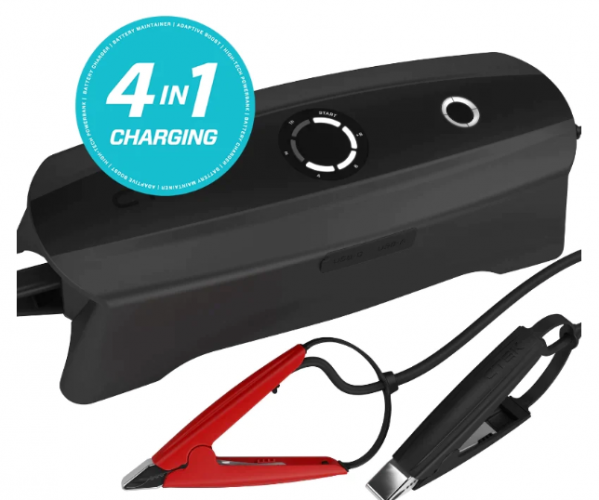Winter is upon us, and car batteries all over America are diligently doing their jobs day in and day out. Unfortunately, some car batteries can’t do the job. Perhaps an interior light was left on, or the headlights, or maybe the car suffers from parasitic drain from another cause. Maybe the vehicle’s alternator is on the blink. Or, perhaps the battery itself is just approaching its end of life. When a car won’t start, we instinctively think of a jump-start to “solve the problem.” We need to move on from that bad idea.
Yes, in some cases, a jump-start will revive a car with a problem. However, the jump-start is risky to both the car being rescued and the car offering a jump. CTEK says that modern vehicles have multiple ECUs (electronic control units) performing a range of tasks, from engine management to controlling air conditioning, lights, and parking sensors. These computer systems have a sensitivity level lower than the spike in voltage they see when a vehicle is jump-started. With replacement ECUs costing hundreds or even thousands of dollars, this is a risk you really don’t want to be taking!
How risky is jump-starting? With owners' manuals explicitly prohibiting jump-starting and manufacturers even placing no jump-start icons on battery covers, you risk voiding your warranty if you jump-start a car.
Jump-starting a vehicle enables the donor vehicle to act as a power reservoir to get the engine started, temporarily bypassing the drained battery in the car that will not start. Once the engine is running and you disconnect the booster pack or jump leads, the alternator suddenly senses an empty battery, and it reacts by trying to refill it rapidly. This can cause a spike in voltage and is not good for the battery of the car being jumped.

CTEK says there is a better way to deal with a car that is having trouble starting. Its portable CS FREE uses patented adaptive boost technology to get you going again in around 15 minutes. The advantage to your car is that the CS FREE gently refills the battery with charge. The CS Free indicates it’s safe to start the vehicle. After the CS FREE is disconnected, the battery is already partially full. This means the alternator only needs to raise the charge slightly and within safe limits to top off the battery.
In addition to being an adaptive booster, CS FREE also works as a battery charger, a smart maintainer, and as a high-tech power bank. CTEK says that if you use the CS FREE to maintenance-charge your battery on a regular basis, you can extend battery life significantly.
The one downside we see to the CS Free is that it is a bit more expensive than portable battery boosters at a price of $315 on Amazon. Shoppers there rate the CS Free 4 out of 5 stars and over 177 reviews have been posted. You can find more information on the new CTEK CS Free at the company’s website.
If you have used the CS Free, please offer your impressions in our comments section below.
Author Note: This is not an advertisement. Torque News received no compensation for the publication of this story.
Top of page image of no jump start icon by John Goreham. Image of CS Free courtesy of CTEK.
John Goreham is an experienced New England Motor Press Association member and expert vehicle tester. John completed an engineering program with a focus on electric vehicles, followed by two decades of work in high-tech, biopharma, and the automotive supply chain before becoming a news contributor. In addition to his ten years of work at Torque News, John has published thousands of articles and reviews at American news outlets. He is known for offering unfiltered opinions on vehicle topics. You can follow John on Twitter, and TikTok @ToknCars, and view his credentials at Linkedin











